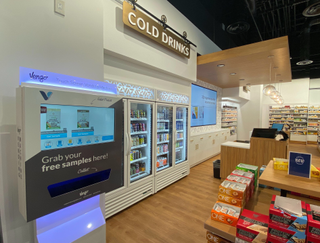
Marci Weisler is Chief Commercial Officer, Vengo.
As we look ahead at 2020 retail strategies, there are a few things to note. One observation is that it’s a complicated time to be a consumer. In the current landscape, traditional media channels have lost much of its power to reach consumers.
Today, TV or print media might still be part of an overall campaign, but more often than not, it’s not even included. Digital (online, mobile, social) has now become mainstream, taking TV’s place with roughly half the global ad market, But digital brings its own set of challenges too, including noise and ad fraud.
To break through, marketers need to find new places and ways to attract, engage and reach their audiences. The average consumer spends about 70 percent of her day outside the home. Aside from mobile ads or existing media like radio or outdoor, digital signage is a major medium for communicating with consumers. In-store isn’t a new place to do so, but innovations that bring the digital and physical worlds closer together in-store are letting retail and brand marketers command attention there in different and exciting ways.
Consumers Pay Attention to In-Store Signage
Dynamic in-store signage is relatively new. Not surprisingly, consumers are taking note of such messaging. Edison Research recently found that 46 percent of consumers agreed DOOH displays are a good way to learn about brands, products and services. Twenty-nine percent say they have recommended a product or service after seeing information about it on a display. Overall, 65 percent of people surveyed recalled seeing an out-of-home digital video display in the previous month..

For some, those stats aren’t surprising. Surveys show that about 50 percent of shoppers named “on-premise signage” as the reason for their visit. Often, improving such signage leads to a boost in overall sales transactions. And today, 75 percent of consumers expect companies to use new technologies to create better experiences.
A New Spin on Joining the Physical World and Digital Worlds: Sampling is a Huge Opportunity
Taking an old-school tactic, sampling, and marrying it with digital experiences creates new opportunities for retailers. In the past, sampling was a one-way communication effort. Often, the measure of success was the number of samples distributed. While broad distribution can provide reach, there’s no ability to track who is getting a sample and if they are converting from a “trial-er” to a buy. But now that we can harness the analytics and data that fuel today’s consumer brand loyalty and connection, we ought not settle.
With data a driving force in marketing today, retailers like The Vitamin Shoppe and Earth Fare have launched interactive digital kiosks that provide sample in return for consumers answering surveys and “opting in” to receive future communications.
As another example, this past summer, Unilever’s Magnum ice cream brand ran a sampling program at Saks Fifth Avenue’s flagship store in Manhattan. In addition to enabling consumers to create their own Magnum bar, the brand used an interactive digital kiosk to ask pertinent questions, capture consumer data and extend another touchpoint by providing a coupon that could be used on the next purchase of Magnum at the grocery store. The brand was able to engage ice cream lovers and develop a relationship with those who opted in to receive more information from the brand.
Outside of stores, location relevance also makes a huge difference for marketers, finding consumers where they are at, and at a point in their day where a specific product might have impact. For instance, it may be tough for a deodorant brand to get consumers to think about its product in a supermarket, but a gym is a natural environment to attract attention and extends a natural opportunity for sampling, while affording an occasion to engage and gather information that a consumer is proactively willing to share.
Among all the techniques that vie for shoppers’ attention, physical sampling that is coupled with digital experiences commands attention and offers an exciting and new way for brands and retailers to reach consumers where they are at, and in a way that draws consumers in, bringing a new level of consumer understanding and information where in the past there was none. The key moving forward is not only the ability to collect opt-in data from consumers, but to be able to use it effectively—integrating with CRM and combining data collected through various channels and using the insights to build both brand engagement and great consumer experiences.


